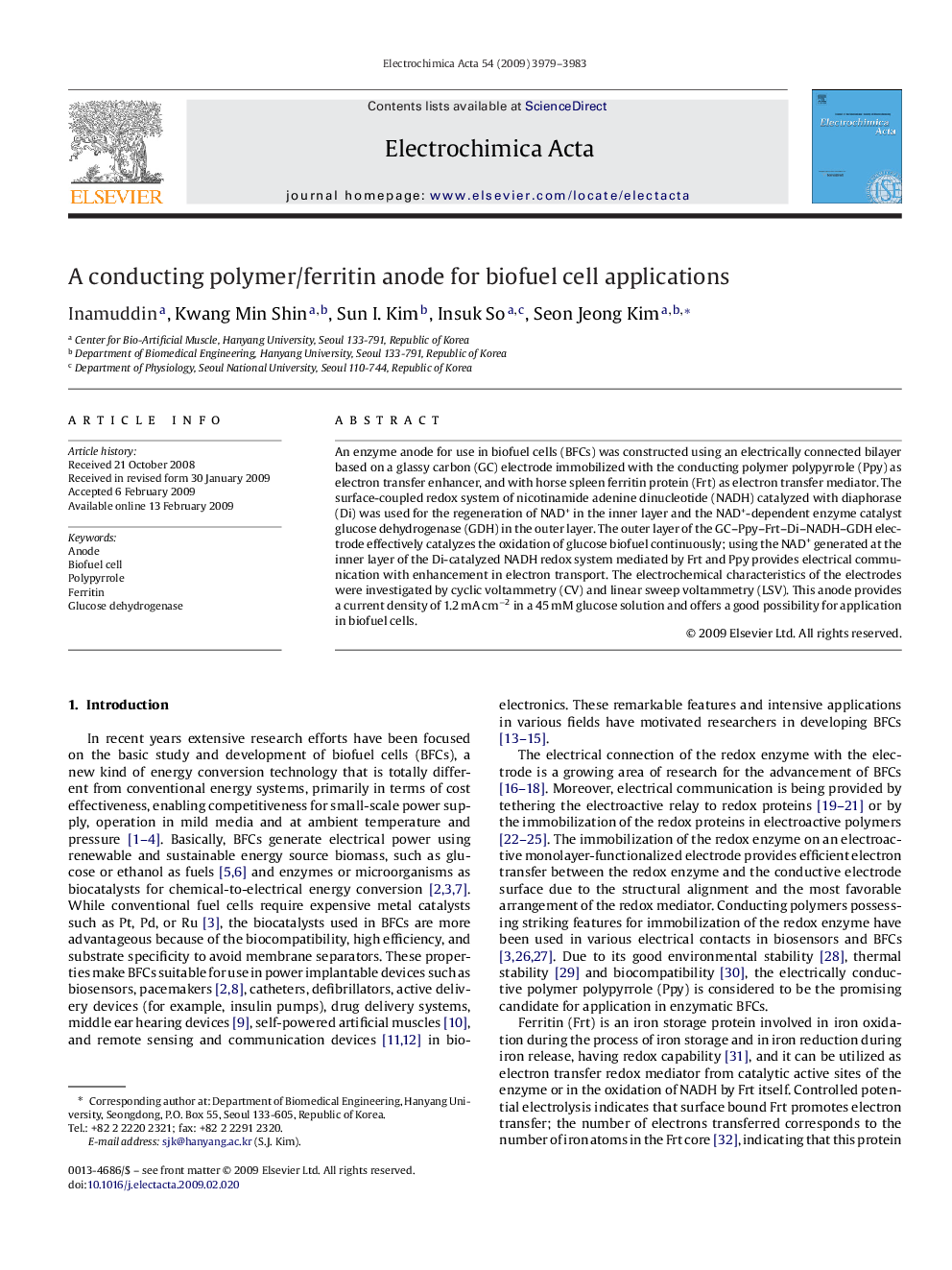| Article ID | Journal | Published Year | Pages | File Type |
|---|---|---|---|---|
| 191276 | Electrochimica Acta | 2009 | 5 Pages |
An enzyme anode for use in biofuel cells (BFCs) was constructed using an electrically connected bilayer based on a glassy carbon (GC) electrode immobilized with the conducting polymer polypyrrole (Ppy) as electron transfer enhancer, and with horse spleen ferritin protein (Frt) as electron transfer mediator. The surface-coupled redox system of nicotinamide adenine dinucleotide (NADH) catalyzed with diaphorase (Di) was used for the regeneration of NAD+ in the inner layer and the NAD+-dependent enzyme catalyst glucose dehydrogenase (GDH) in the outer layer. The outer layer of the GC–Ppy–Frt–Di–NADH–GDH electrode effectively catalyzes the oxidation of glucose biofuel continuously; using the NAD+ generated at the inner layer of the Di-catalyzed NADH redox system mediated by Frt and Ppy provides electrical communication with enhancement in electron transport. The electrochemical characteristics of the electrodes were investigated by cyclic voltammetry (CV) and linear sweep voltammetry (LSV). This anode provides a current density of 1.2 mA cm−2 in a 45 mM glucose solution and offers a good possibility for application in biofuel cells.
